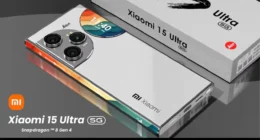The screens on modern electronic gizmos come in a variety of shapes, sizes, and resolutions, but they all have one thing in common: the sub-pixels for red, blue, and green are positioned side by side. Even with the smallest pixels packed as densely as possible, the theoretical density limit of this flat layout has been reached. The MIT team’s stacking LED technology may represent the next phase. Using a revolutionary ultrathin membrane production method, the researchers have constructed a display with vertically stacked red, blue, and green pixels. This might result in a tenfold increase in pixel density, rendering virtual reality visually indistinguishable from the actual world.
Organic light-emitting diodes (OLEDs) emit light when supplied with an electric current and are used in today’s highest-quality screens. Even with intelligent pentile sub-pixel layouts, the density cannot be increased significantly. As pixels become smaller, so does the amount of light they are able to emit. MicroLED, which employs diodes 100 times smaller and is built of inorganic materials, is likely the next technological advancement. The issue is that microLEDs are created individually as red, green, and blue matrices, which must then be overlaid with extraordinary precision, resulting in higher costs and increased waste; if even one pixel is misaligned, the entire panel may need to be scrapped.
According to a recently published paper in Nature, the technique developed at MIT is essentially a more efficient and less wasteful method for producing microLEDs. Professor of engineering Jeehwan Kim, who specialises in the fabrication of ultrathin, high-performance membranes, led the research. The team utilised previous research on 2D membrane materials to produce membranes with red, green, and blue subpixels. They separated the membranes from the hard foundation layers and layered them on top of each other to create 4-micrometer-wide vertical full-color pixels.
This is the tiniest microLED pixel with the highest known pixel density, according to Jeehwan Kim. These colour stacks are only the beginning; the researchers demonstrated that by adjusting the input voltage, they could produce several colours in each stacked pixel. However, we would still want a system capable of controlling 25 million individual LEDs. Kim’s group will work in the future on the development of that active matrix.
However, the mere ability to manufacture these stacked ultrathin panels is a significant advancement. The effective pixel density of the team’s microLED matrix is 5,000 pixels per inch, which is the highest pixel density ever documented in the scientific literature. In instance, Samsung’s most recent OLED screens have approximately 500 pixels per inch, and even the best VR headsets have fewer than 1,000. Vertical pixels, if marketed, would significantly boost clarity, particularly for VR and AR applications. However, driving an ultra-high-resolution display presents a completely separate set of challenges.
Related Articles:
Google, Microsoft and 15 other technology companies headed by Indian-origin executives
There Is a New “vintage” Technology that Generation Z Is Obsessed With.
It Appears that Google Will Debut Their Chat Gpt Clone on February 8.









